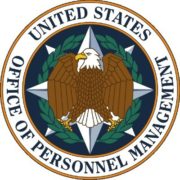OPM Issues New Benefits Administration Letter to Promote the Integrity of the Federal Employees Health Benefits Program
Source: OPM.gov
Washington, D.C. – The U.S. Office of Personnel Management (OPM) today announced new actions to further promote the integrity of the Federal Employees Health Benefits (FEHB) Program. In a Benefits Administration Letter (BAL), OPM outlined requirements for federal agencies and carriers regarding new enrollment actions that will ensure comprehensive verification and review of family member eligibility:
- OPM directs agencies to confirm employees’ relationships to spouses and family members when an enrollment change is made during Open Season. Specifically, the BAL requires that agencies verify a meaningful sample of family members included in Open Season elections from the prior year.
- OPM also previewed that federal employees will be required to provide eligibility documentation for all new family member enrollments during Open Season in subsequent years.
- OPM is continuing to crack down on bad actors. OPM will use its newly completed FEHB Master Enrollment Index (MEI) to run queries that can spot certain enrollment irregularities in existing enrollments. If irregularities are found that merit further inquiry, OPM will notify agencies to review those enrollments. OPM currently requires all agencies to notify enrollees of the consequences of improper enrollments, including fines and imprisonment.
Today’s actions build on years of progress addressing issues in FEHB enrollments. Collectively, these requirements ensure that agencies are verifying documentation provided during each of the key periods when an employee might make a change.
- In 2021, OPM issued a Letter to Carriers and a BAL to employing offices that required them to validate the eligibility of newly enrolled employees and family members, as well as employees seeking to change their coverage for a qualifying life event. The letter also required carriers to obtain proof of family member eligibility when adding family members to an existing “Self and Family” plan.
- In 2022, OPM issued a Letter to Carriers providing guidance on removing children from FEHB coverage once they reach age 26 and become ineligible.
- In 2023, OPM issued a Benefits Administration Letter requiring employing offices to communicate a Family Member Verification Annual Notice to employees, which outlines FEHB eligibility rules, requires employees to ensure family members are eligible to be covered under their plan, and outlines the consequences of improper enrollments.
OPM has proposed legislation in its FY2025 Congressional Budget Justification which would enable OPM consistent access to funds from the Employee Health Benefits Fund to build a Central Enrollment system for the FEHB Program. Current FEHB eligibility determination and enrollment is highly decentralized and requires cooperation between nearly 100 employing offices responsible for determining eligibility and enrolling more than 8 million members. These benefits are delivered by 68 health insurance carriers in 2024.
Since 2022, and following passage of the Postal Service Reform Act, OPM began developing the Postal Service Health Benefits Program to include a centralized enrollment platform. The PSHB accounts for more than 20 percent of current FEHB enrollees. If funded, OPM could extend this same central enrollment system to all FEHB enrollments, which would allow OPM to manage and make consistent all FEHB enrollments and remove individuals who cease to be eligible for the program.





